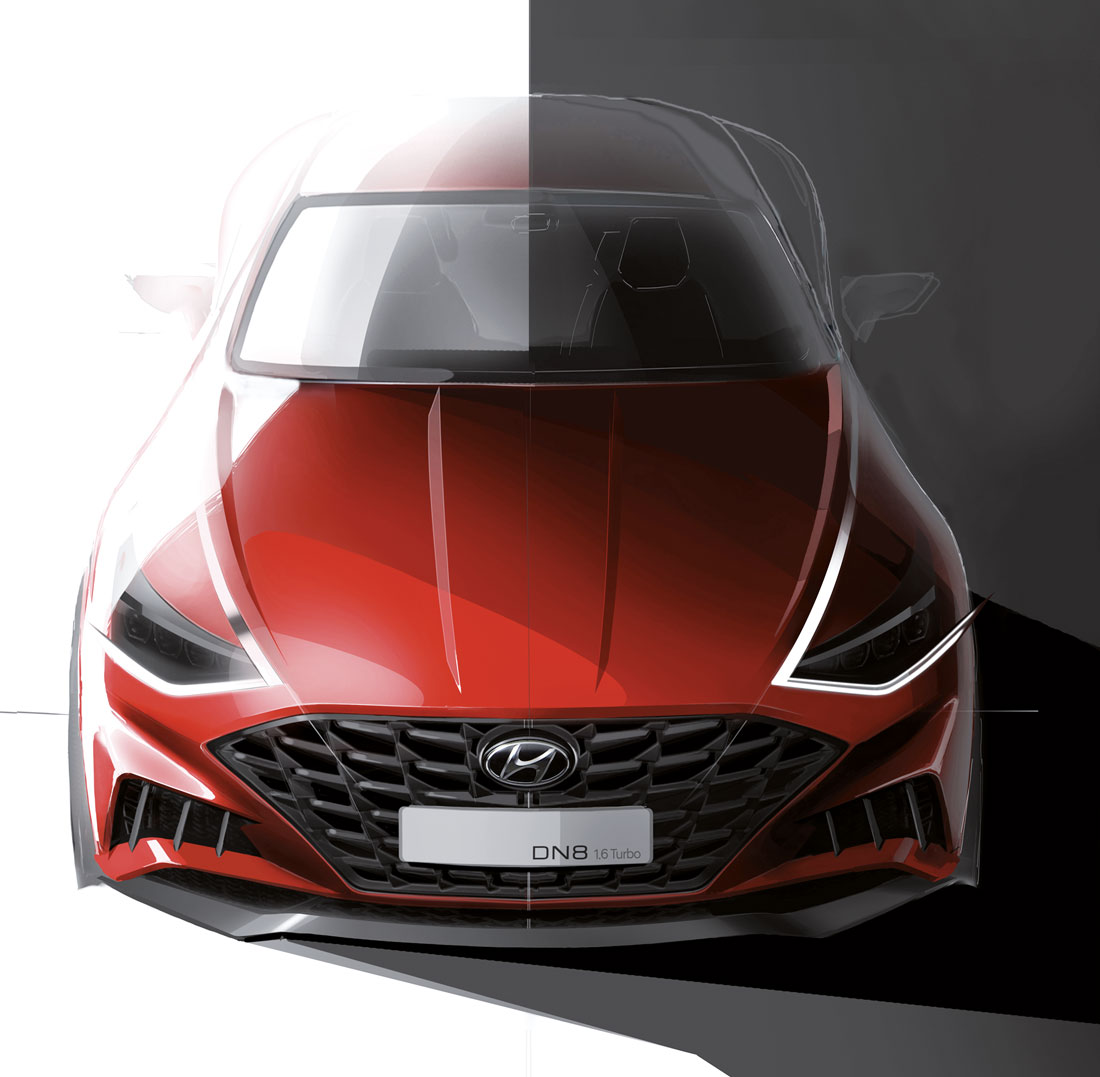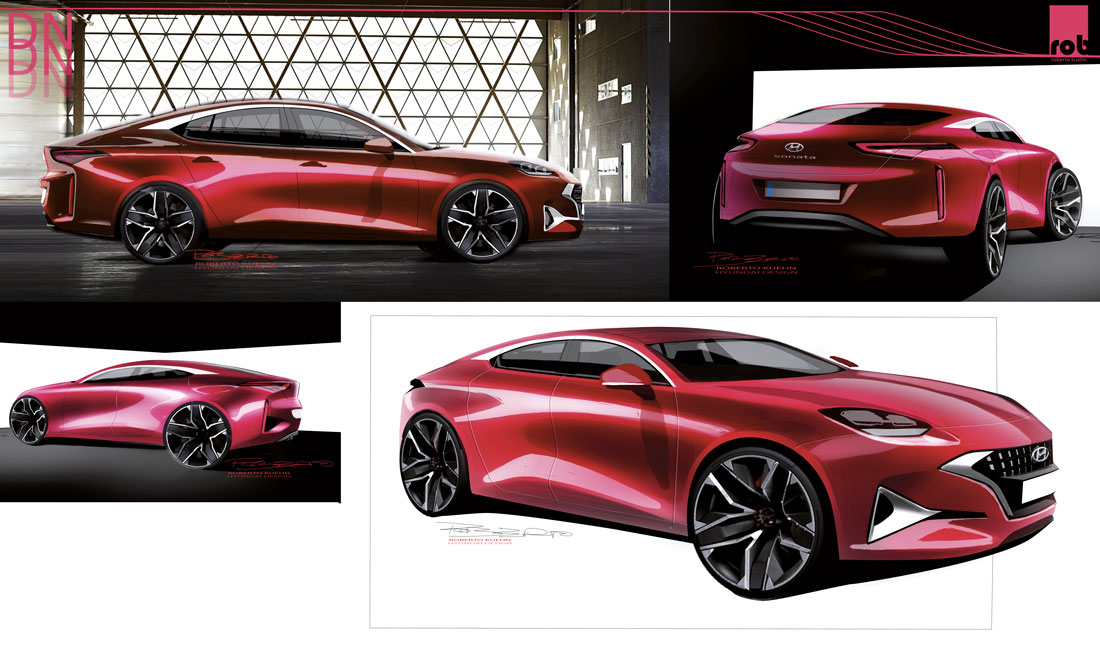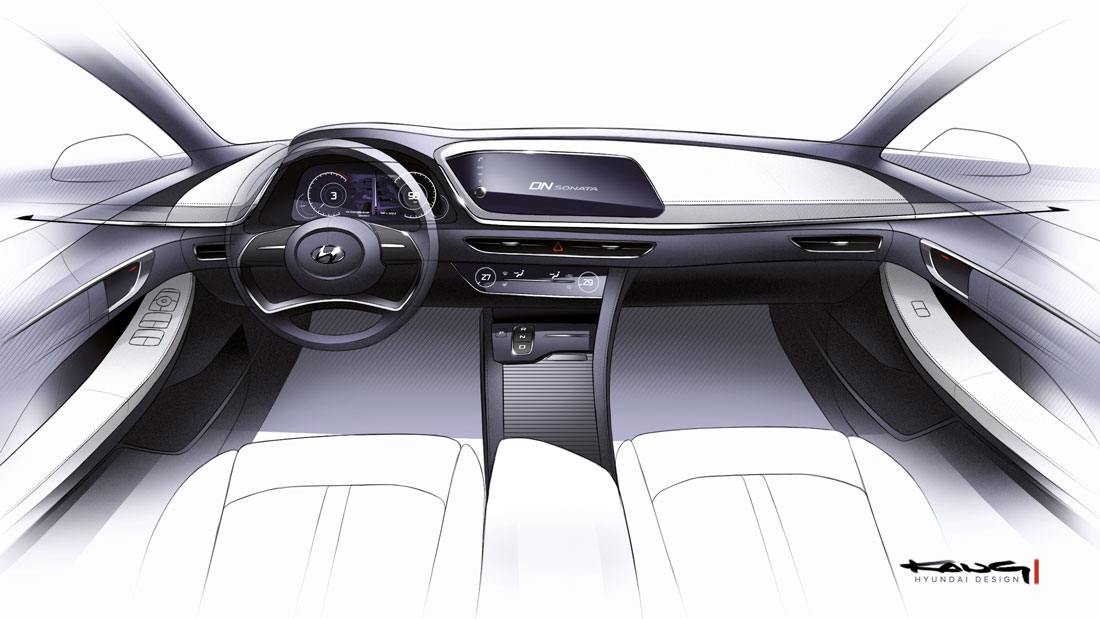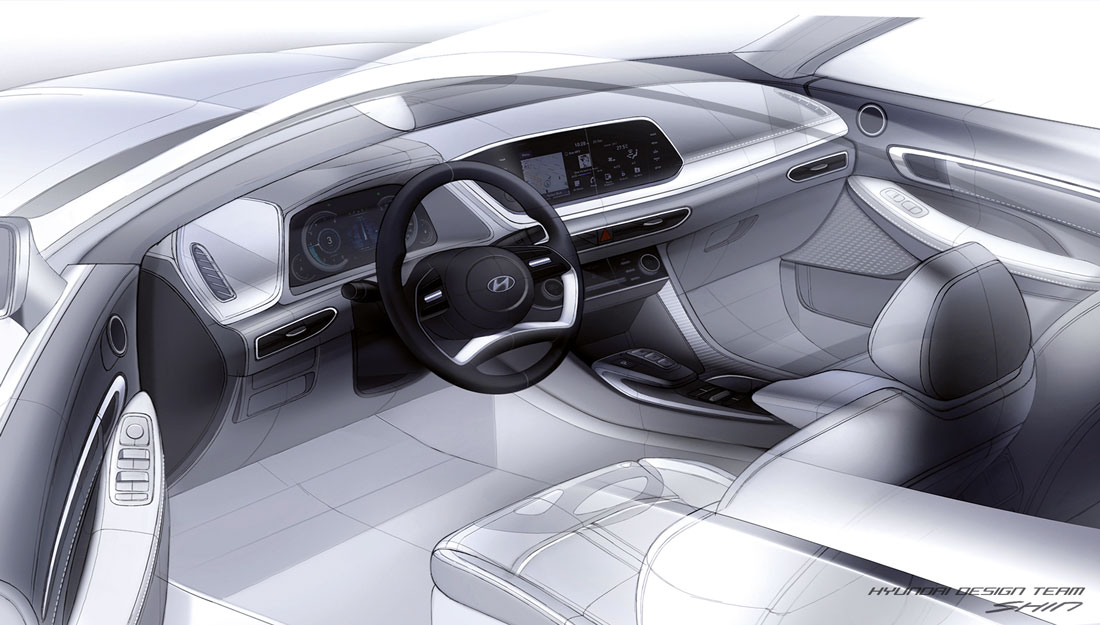For the eighth series of the Sonata – the medium-large saloon that Hyundai has been offering for more than thirty years – the Korean company is now launching its new design philosophy, that “sensual sportiness” that was launched last year in Geneva with the Le Fil Rouge concept. This is a language that, in the words of Luc Donckerwolke, head of design for the Hyundai group, “allows us to open a new era from the basis of our tradition, which is to create a distinctive and sporty character in our models.”
Everything is following a theme, which Le Fil Rouge wanted to point out and which started way back in 1974 with the historic Pony Concept designed by Giugiaro. “With sensual sportiness,” echoed SangYup Lee, Hyundai’s style manager, “we want to forge an emotional value for a brand that has always been dedicated to practicality.” That is why this Sonata was created in the name of a new form of harmony, whose underlying principles – as its designers explained – are proportions, architecture, style and technology, combining in a symphony of concave and convex forms destined to create nothing less than sensual tension.
It’s also a demonstration of bravery: at a time when most car manufacturers are focusing on SUVs and crossovers, Hyundai is also betting its chips on the saloon, albeit revamped and moved on from the classic three-volume precept to what could be called a four-door coupé, spacious but with a sloping roof in fastback style, that fuses with the tail in a spoiler taking in the rear light units as well. So we hope that with this model – codenamed DN8 – we can relive the success of the 2010 Sonata YF, which led some critics to mention “magic”; a magic that others thought faded a little in the next model LF in 2015.
In fact, the DN8 breaks away from all previous stylistic features, except the hexagonal grille, and adopts styling solutions, such as the deep lines giving character to the sides or the bonnet with a chrome border that lights up in the dark, which lead SangYup to coin the term “everyday exotic”. The Sonata, whose design was started in 2016, is also – explained Donckerwolke – “the first car to make use of our new digital design process”: a method exploiting closer synergy with the engineers in defining the platform.
The new Sonata, intended mainly for the Asian and American markets, grew from the usual competition between all the designers in Korea, but also those in California and Germany. “In the end,” explained SangYup “for the exteriors the proposal of our Namyang style centre held sway, while for the interiors the answer we opted for came from California.
And although it all came together in Korea, where we made three clay models for the exterior and three for the interior, we deliberately avoided a common design language, being convinced that the car might be more interesting on account of its diversity.” Jaebong Jang, Exterior Design Manager, added: “Our aim was to relive the glory of the vintage Sonatas, using sportiness and beauty, clean, balanced forms, while applying the new architecture to get away from ‘boxy’ ideas, employing exciting stylistic features instead.”
(Full article in A&D no. 237)
















